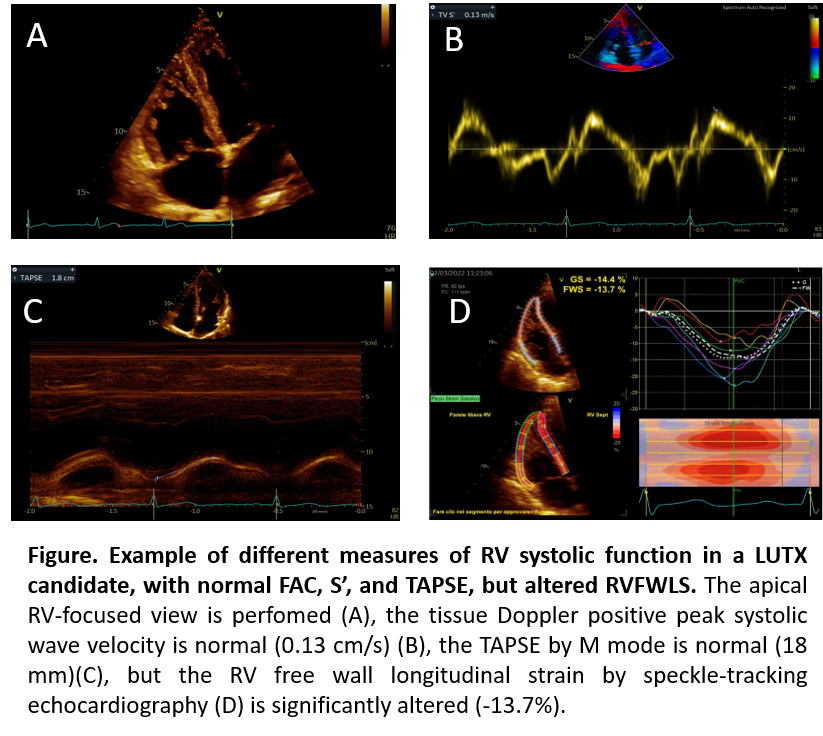Abstract
Lung transplant (LUTX) candidates frequently have secondary right ventricular (RV) dysfunction, which standard assessment has poor sensitivity and high logistical footprint. In this single-center prospective observational cohort study on bilateral LUTX patients, the preoperative RV free-wall longitudinal strain (RVFWLS) was compared to conventional RV echocardiographic (tricuspid annular plane excursion ? TAPSE, fractional area change ? FAC, tricuspid peak annulus systolic velocity - S') and ventriculographic tests. Of the 44 enrolled patients, 10 had poor RV window. Compared to standards, LUTX candidates had statistically significant impaired RVFWLS (20.1% [-22.5% ? -17%], p<0.001): 47% having pathologic RVFWLS (> -20%), and 15% normal standard tests, but altered RVFWLS (Fig1).
RVFWLS identified the highest percentage of impaired RV function (47%) compared to conventional echocardiographic parameters (TAPSE, 32%; S', 27%; FAC, 26%) and ventriculography (15%) (Table1: Conventional RV tests vs. RVFWLS).
| Index | p | Sensitivity | NPV | Specificity | PPV |
| RV ejection fraction | 0.478 | 0.11 | 0.42 | 0.80 | 0.40 |
| TAPSE <17mm | 0.179 | 0.22 | 0.39 | 0.56 | 0.36 |
| FAC <35% | 0.943 | 0.28 | 0.45 | 0.73 | 0.55 |
| S' <9.5 cm/s | 0.854 | 0.27 | 0.48 | 0.75 | 0.55 |
The RVFWLS provides sensitive, non-invasive, repeatable, and radiation-free RV assessment compared to standard tools in LUTX candidates.